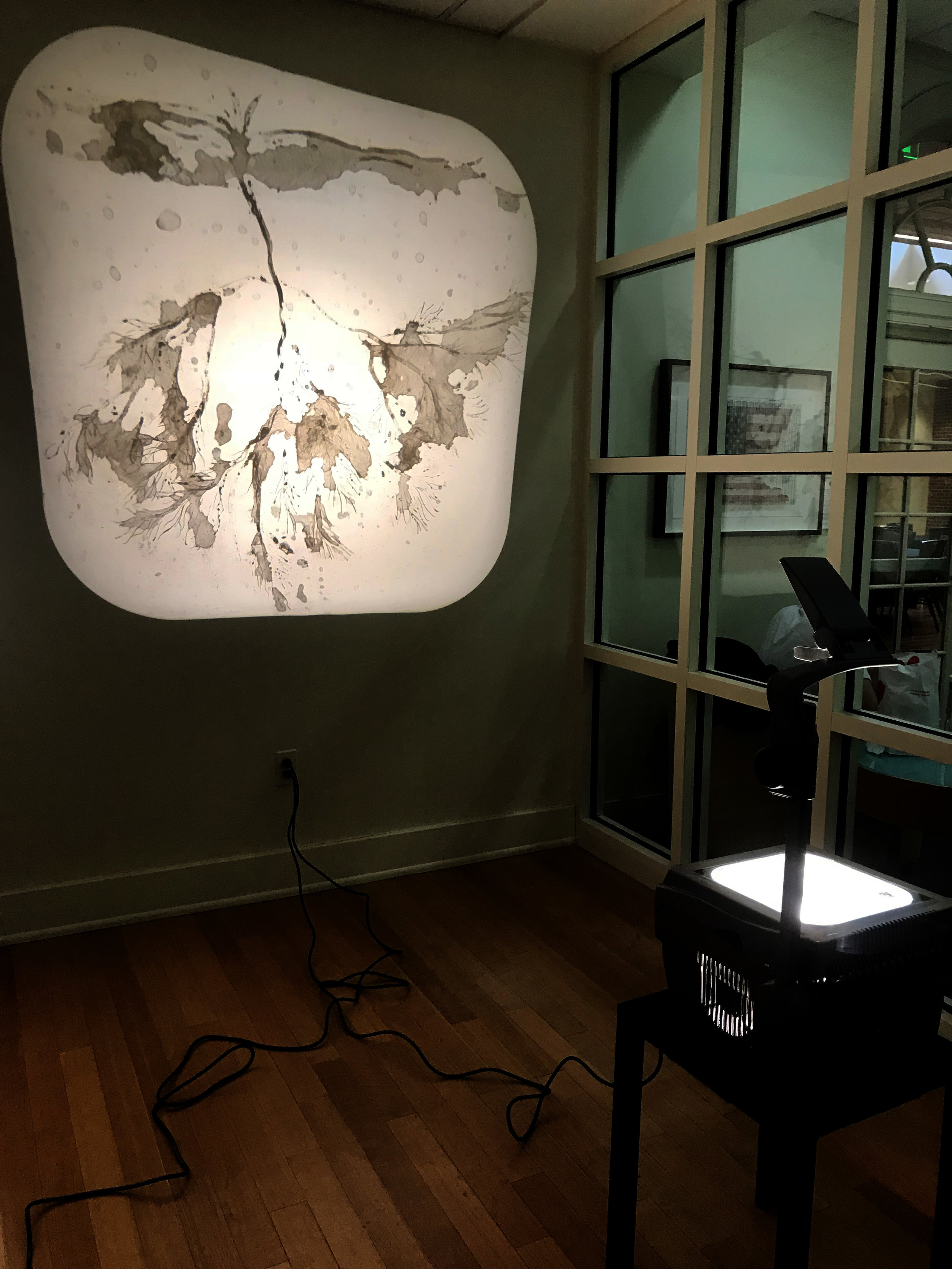

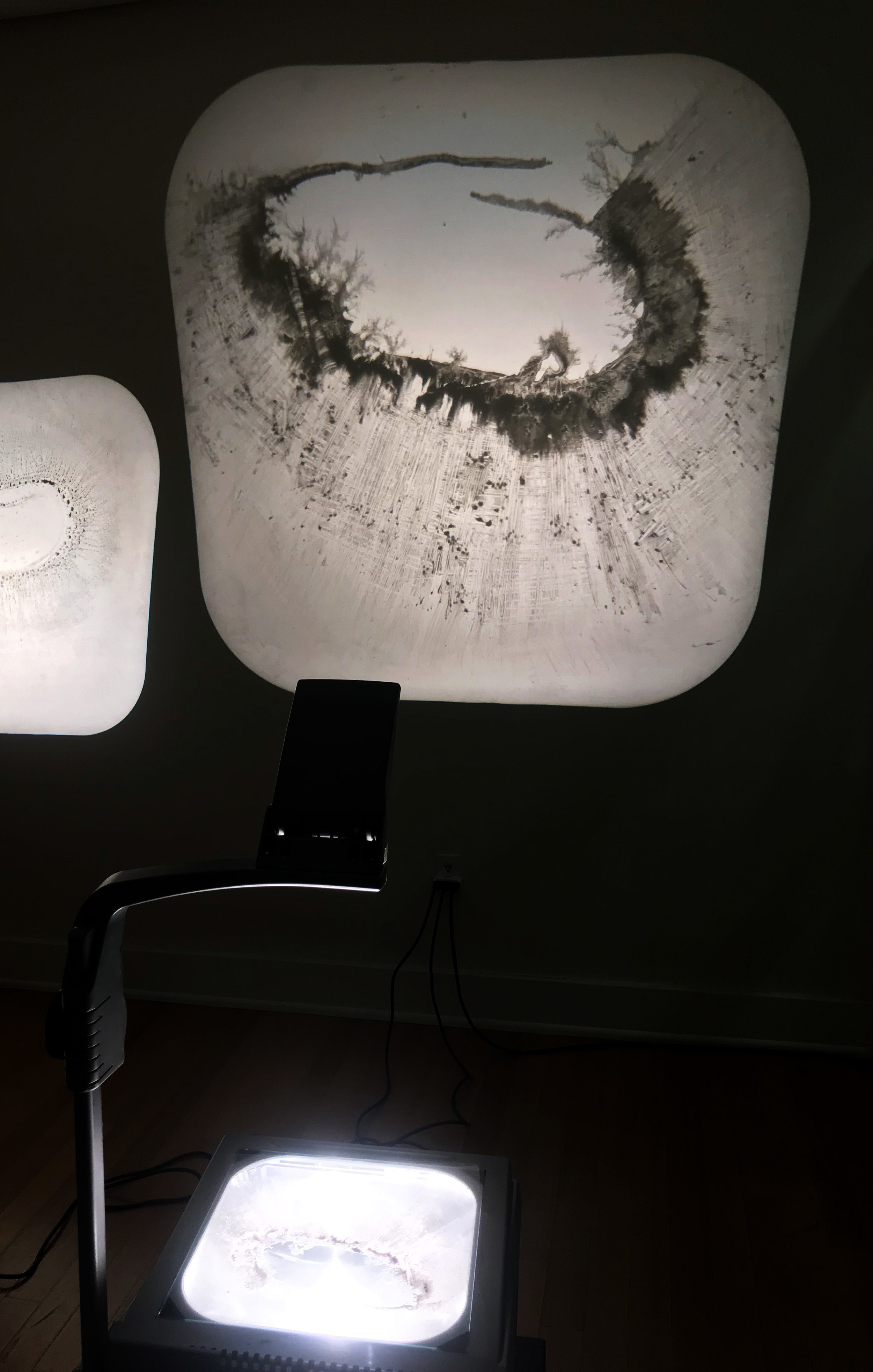
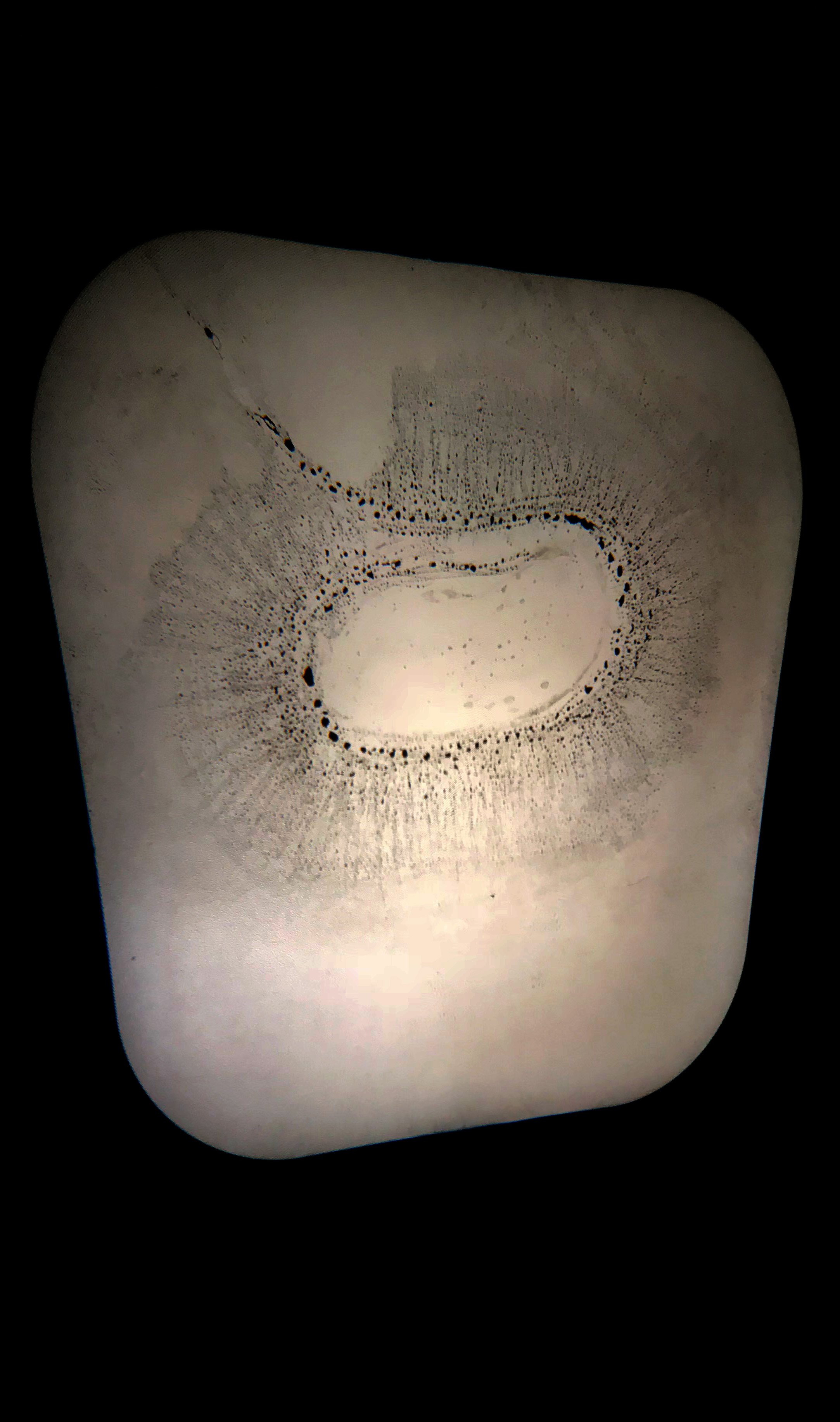
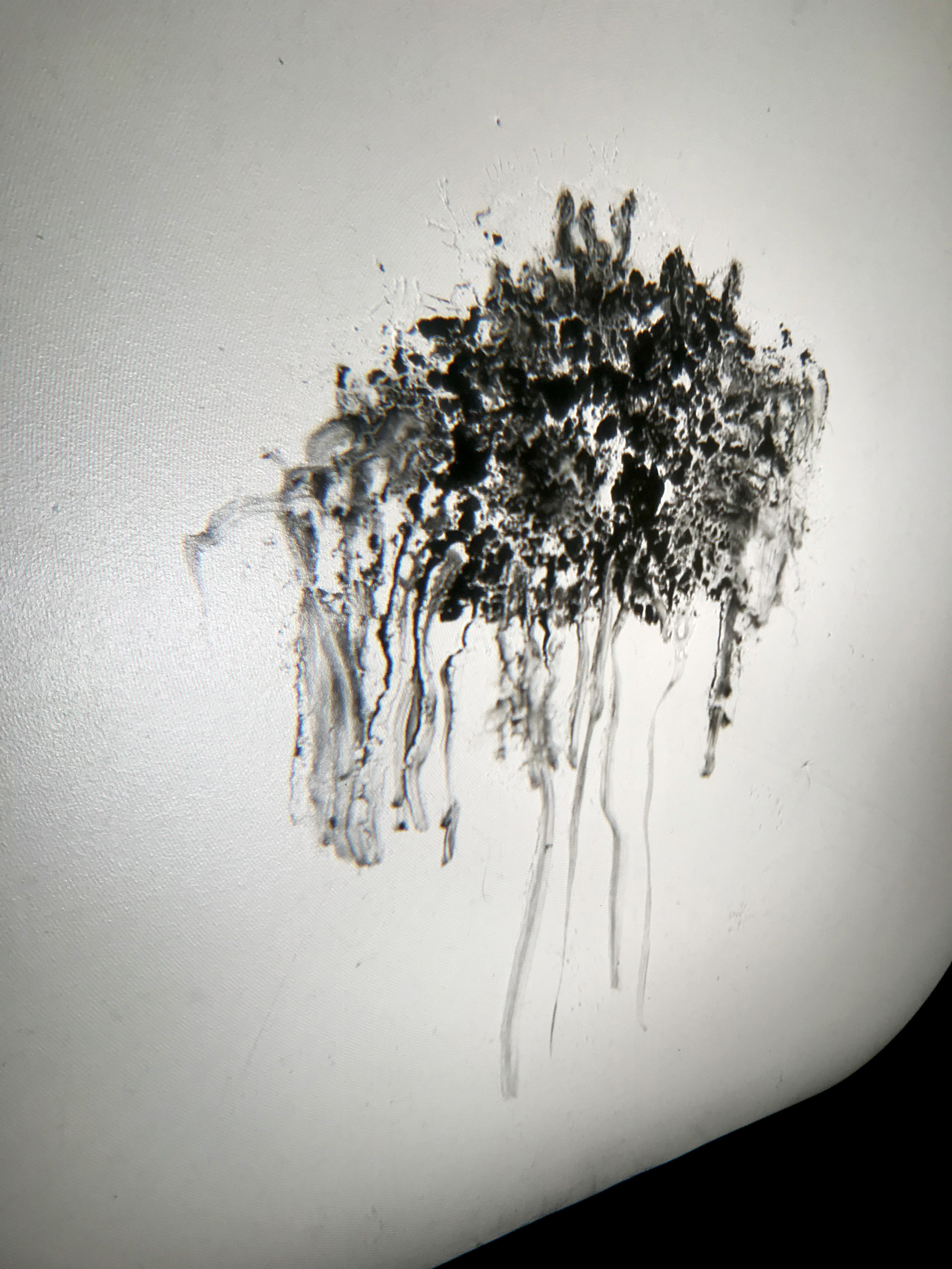
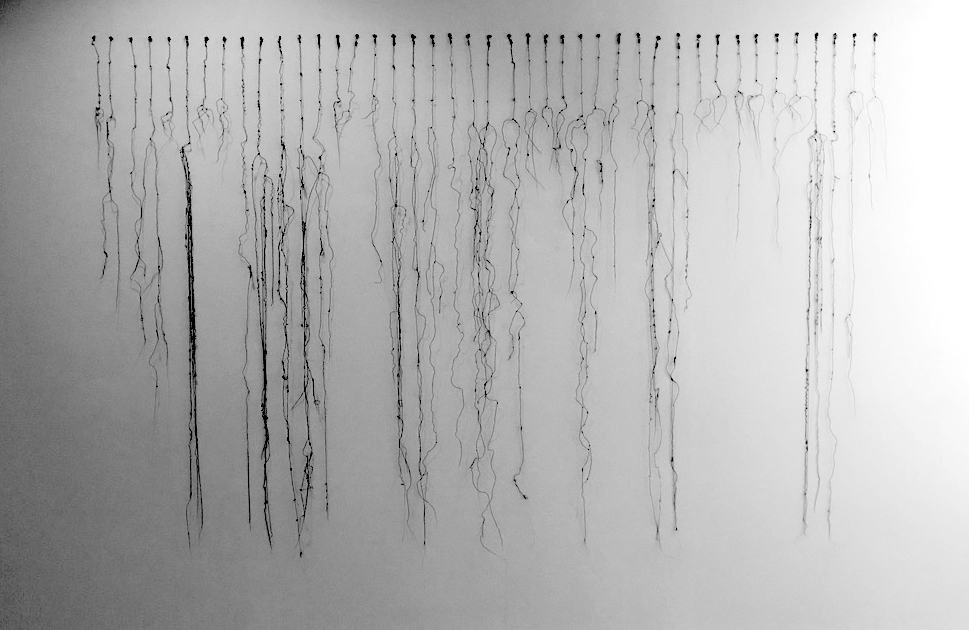
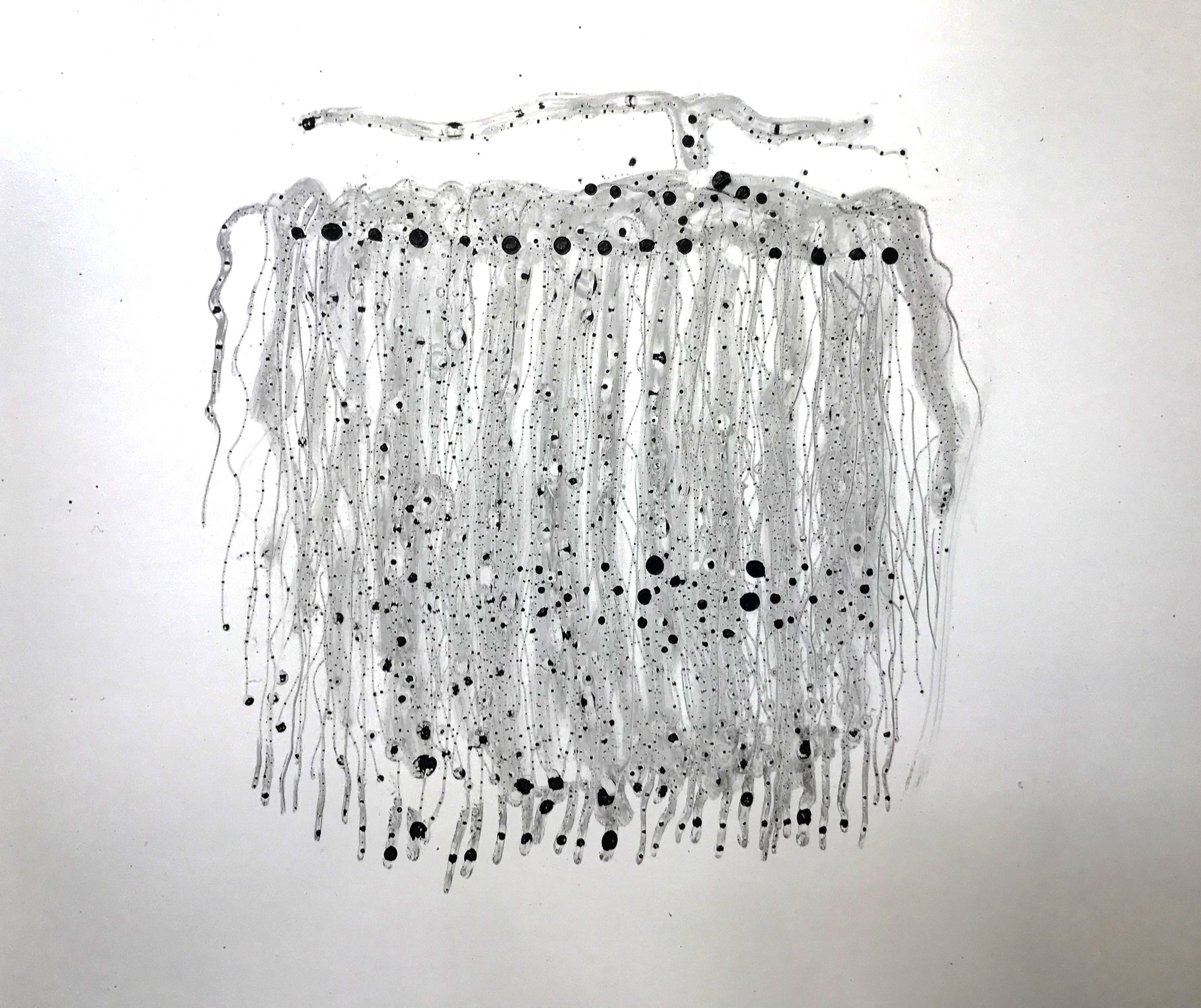
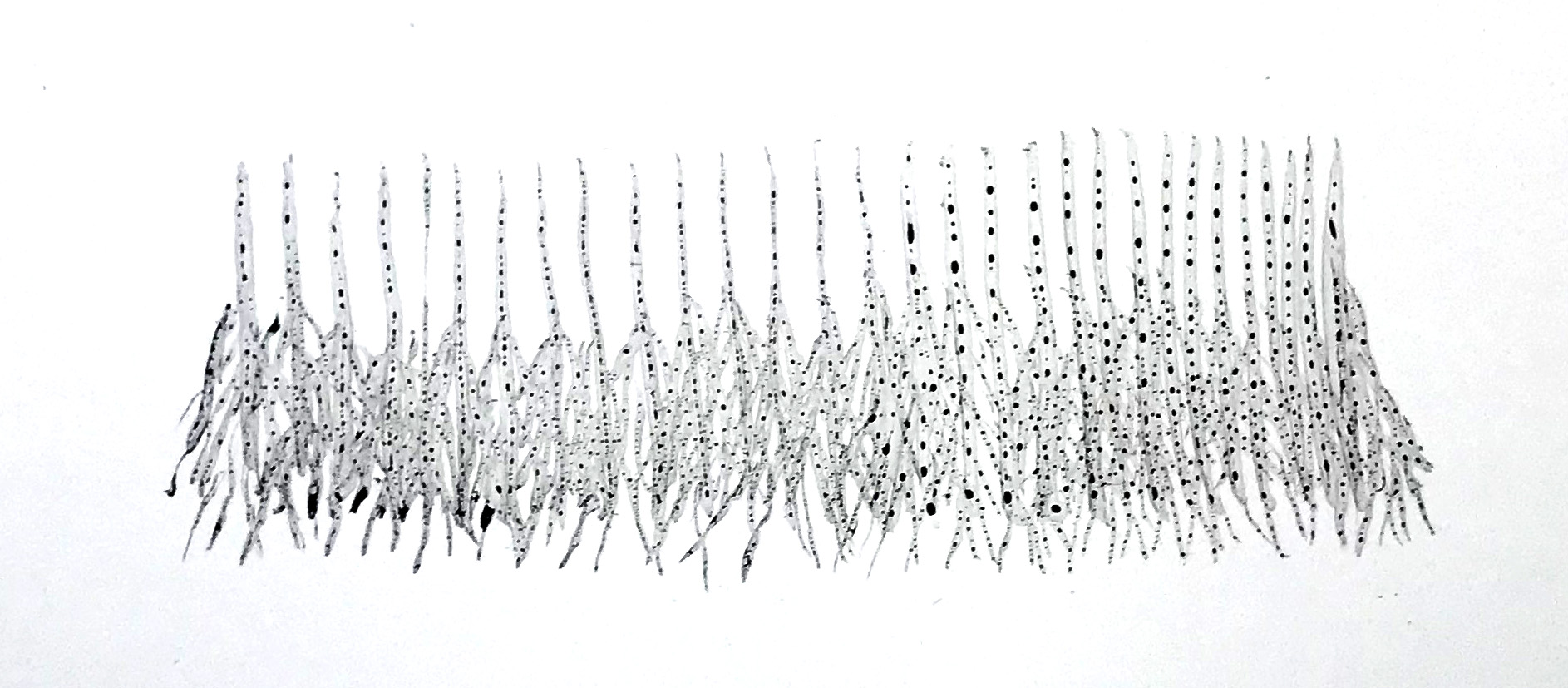
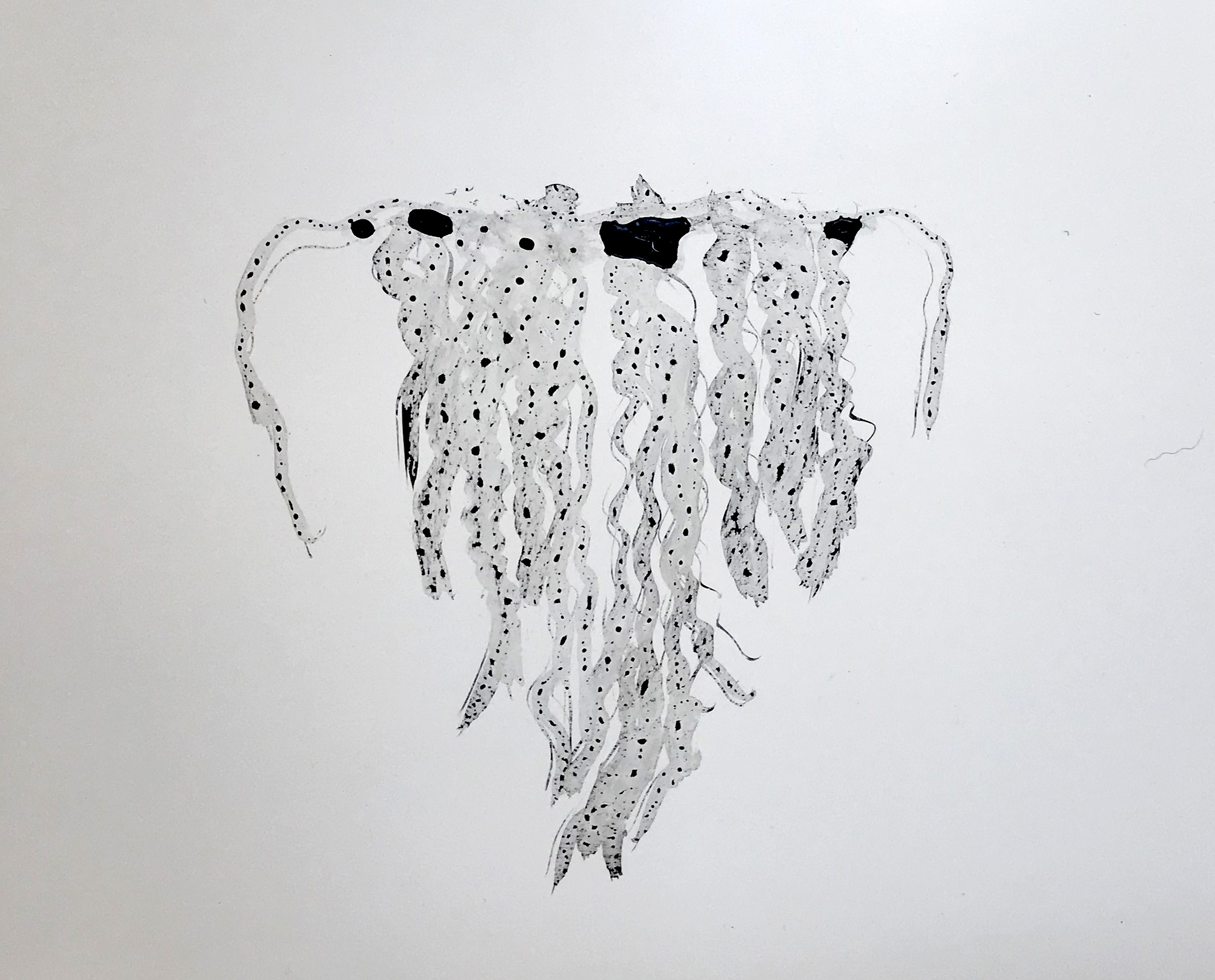
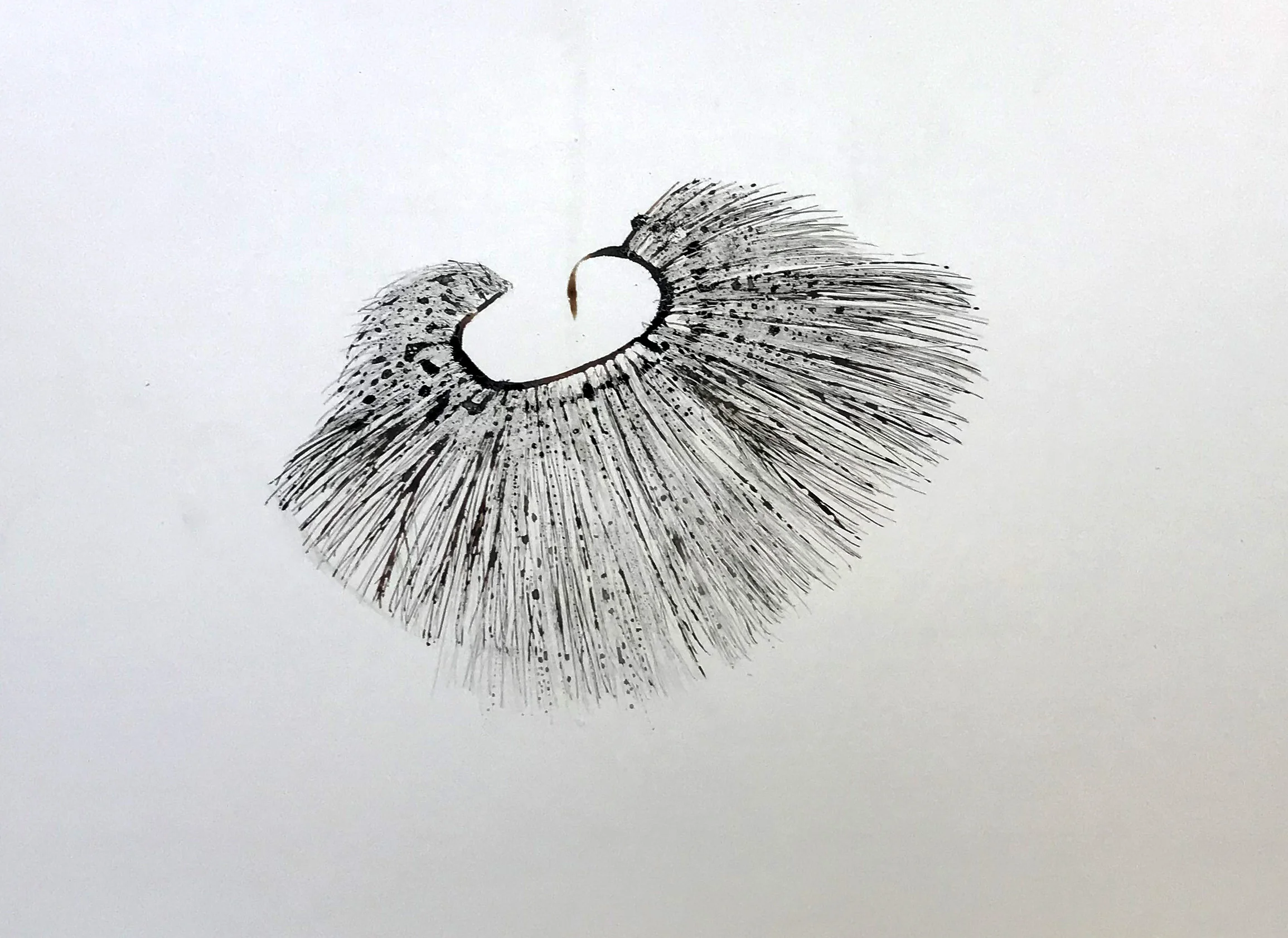
Your Custom Text Here
The string and knot record keeping devices of the Incas have been a lifetime obsession of mine. They are human-made, yet take on the structure of a natural fractal, hide oral narratives, encode a census and taxation system we cannot decipher, and persist despite a long history of attempted erasure.
The string and knot record keeping devices of the Incas have been a lifetime obsession of mine. They are human-made, yet take on the structure of a natural fractal, hide oral narratives, encode a census and taxation system we cannot decipher, and persist despite a long history of attempted erasure.
Quipu reiteration I (2018)
Overhead projector, sumi ink on mylar (dimensions variable)
What we know today about the quipus, the string and knot records made by the Incas to record tax and population data, as well as collective narratives, is mostly based on the drawings and accounts left by the early Spanish settlers, followed by the subsequent studies of legions of anthropologists. The majority of quipus themselves were destroyed by the Spanish colonizers. Learning about the quipus is immersing oneself in a litany of renditions and writings all marked by the writers’ views and agendas. My projections of gestural drawings of quipus reflect on the elusiveness of our past and how much our understanding is derived from a precarious process of transmission.
Quipu reiteration II (2018)
Overhead projector, ink and oil paint on mylar (dimensions variable)
Quipu reiteration III (2018)
Overhead projector, ink, linseed oil on mylar (dimensions variable)
Quipus were made as part of maintaining a thriving nation. While not fully deciphered yet, quipus are believed to have recorded census and tax data, as well as computations, on a decimal system. The records also served as nemonic devices to pass down oral traditions. This and the next drawing envision the quipus as part of the landscape and built environment.
Quipu reiteration IV (2018)
Overhead projector, sumi ink on mylar (dimensions variable)
Quipu reiteration V (2018)
Overhead projector, white oil paint on mylar (dimensions variable)
The fate of the quipus is symbolic of so much ancient history, forgotten yet still viable. These artifacts were, except for a few, destroyed by the Spanish colonizers. This and other quipu gestures I made came out looking like a bundle of roots, rich and complex, whose sprout or plant above ground is no longer there.
Quipu (string and knot record) 2018
Polylactic acid filament, pins (approximately 6' x 5')
The basic composition of a quipu looks a lot like a computer data sheet. Strings of information stream down in parallel line, creating an enigmatic pattern along the horizontal markings. The composition also looks like the branching of trees or the delta of a river in that a string splits into smaller ones that split even further. This also mimics our present-day flow charts.
Root inklings (detail)
Root inklings (detail)
Root inklings (detail)
Root inklings (detail)
Capacocha (2021)
Video (2:24)
A message in a bottle, washed ashore, perhaps in my heartland. Inspired by the child sacrifices of the Incas. Are their spirits, released into the world through elaborate rituals and hypothermia to protect us from natural forces, still out there? Music is a fragment of Agua, composed by Patricia Bedregal Velazco.
2016-2025 © Irene N. Pantelis